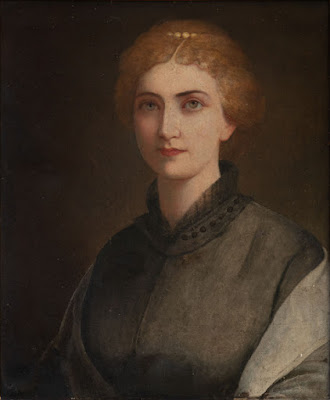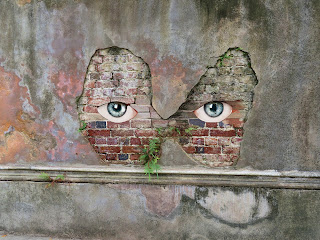In the grand sweep of American history, few names echo with as much intrigue as Aaron Burr—a vice president, a duelist, a man etched into the nation's collective memory. Yet behind his infamous legacy lies a quieter, more haunting tale, one that drifts like sea mist through the cobbled streets and salt-stained air of Charleston. It belongs to his daughter, Theodosia Burr Alston, whose life and mysterious disappearance have become part of the Lowcountry’s whispered lore. Her story, though often overlooked, is as compelling as any found in the annals of early America.
Did this rendering give you a chill? The following true account is so chilling that after reading it you will exclaim, "Burrrrrrr." It is a story that has no resolution and to this day, remains a famous unsolved mystery. The characters are well-known historical figures with a Charleston connection. It involves the tragic disappearance of Theodosia Burr Alston.
Theodosia was born June 21, 1783. Her father was the third U.S. Vice President, Aaron Burr and her mother was Theodosia Bartow Burr. She was schooled on a curriculum meant for a future scholar, fluent in several languages, and equipped to handle herself in just about every subject, from math to music. Unfortunately, she struggled with intense bouts of grief after her mother died when she was eleven years old. In 1801, she married Joseph Alston, a wealthy landowner from South Carolina and a person known for a having a kind and caring demeanor. They lived at 94 Church Street, a fine house built by Thomas Bee in 1730.
 |
| 94 Church Street |
Theodosia was very devoted to her father and corresponded often, their letters numbered in the thousands. Her life grew more difficult in 1804 when her father fatally shot former Secretary of the Treasury Alexander Hamilton in a duel in Weehawken, NJ on July 11. Aaron Burr went on trial for murder with her full support and was acquitted. In 1807, he defended himself against a conspiracy charge and again she fully supported him. During this time, she traveled back and forth between Charleston and New York. After a year long, difficult trial, her father once again won acquittal, but due to opposition, left the United States for exile in Europe.
Theodosia returned to South Carolina. She remained a strong advocate for her father, writing letters to Secretary of the Treasury Albert Gallatin and to Dolley Madison in an effort to secure a smooth return for her father to the United States. The date for his return was set.
Theodosia's health had become more fragile, and when her son died of malaria in June 1812, she collapsed. She wrote her father, "Less than a fortnight ago your letter would have gladdened my soul. Now there is no joy, and life is a blank. My boy is gone-forever dead and gone!"
Aaron Burr returned to New York after four years of exile. He looked forward to seeing his pride and joy. Deeply concerned about his daughter's health, he convinced her to come to New York for the holidays. The United States and Great Britain were now at war. Her husband was sworn in as governor of South Carolina on December 10 and couldn't leave. Her health continued to deteriorate.
Alston was uneasy about sending her on what would be a five to six day voyage by ship. Adding to his concern were rumors circulating around the Carolinas about pirates operating along the North Carolina Outer Banks. Theodosia begged her husband to allow her to reunite with her father and after certain conditions were met, he consented. Alston wrote a letter to the British Navy blockading the coast, asking for safe passage for his wife and a doctor and close friend of Burr named Timothy Green was assigned to accompany her.
Theodosia, carrying a recent portrait of herself that she intended to give her father as a Christmas gift, Dr. Green, and a maid climbed aboard the schooner Patriot moored in Georgetown and set sail on December 31, 1812 into the dimension of both shadow and substance and crossed over into the Twilight Zone. The Patriot, crew, and passengers disappeared without a trace into oblivion. Thus, the chilling tale of Theodosia Burr Alston was born.
Joseph Alston wrote letters seeking information on whether his wife had safely arrived, only to receive the devastating news. Her father, Aaron Burr, accepted the theory the ship sank to the bottom of the Atlantic in a raging storm that battered the coastline on January 2 and 3 near Cape Hatteras, but rejected the astounding rumors of the legendary kind that circulated and morphed with the passage of time into today's legend.
Wild stories were theorized. Some claiming pirates, such as Dominique You aka "The Bloody Babe," took over the ship and made every passenger walk to plank. Others say Theodosia was captured, taken prisoner and transported everywhere from the Caribbean to Texas.
Then, there is the tale of the portrait, discovered in Nags Head on the Outer Banks of North Carolina in the 1860s, that many believe to have been the very one Theodosia took with her to be a Christmas gift for her father. While never verified, it's owner claims it was salvaged from a shipwreck that washed ashore on the barrier islands.
Yet, another story claims a Karankawa warrior came upon the wreckage of the Patriot and a dying white woman, who gave him a gold locket bearing the inscription "Theodosia" and told him that if he ever met white men, he was to show them the locket and tell them the story.
Legend has it her ghost is eternally chased by three pirates on the shores of Bald Head Island as she still frantically searches for a way to escape. Some versions even say those pirates are headless, beheaded for their incompetence in guarding her. In recent times, she is seen dressed in a flowing emerald-green gown, but most of the time she's dressed in all white, the outfit she is said to have slipped into before pirates made her walk the plank.

Some late December evening, you are walking on the Battery's waterfront after enjoying a dinner at one of the downtown's fine restaurants. At some point, you stop to look out over the darkened harbor waters. Suddenly, you feel a chill in the already cool air. Then, you realize you are not alone. In the corner of your eye, appears a figure. You turn and see it is a petite young woman dressed in a full-length white dress wrapped in a soft haze. You try to convince yourself the strange aura could be the result of the moonlight. You sense she is distressed. Out of concern you inquire, but she offers no response. You perceive she wants to be left alone and you move on. When shown a photo of the Nag's Head portrait, witnesses say they believe Theodosia is the woman they saw staring into the harbor. It was an unusual encounter to be sure.
Ghost Walk Tours
Charleston Tours
Ghost Walking Tour and Pub Crawl in Haunted Charleston
Narrated Haunted Ghost Cruise of Charleston Harbor


















































